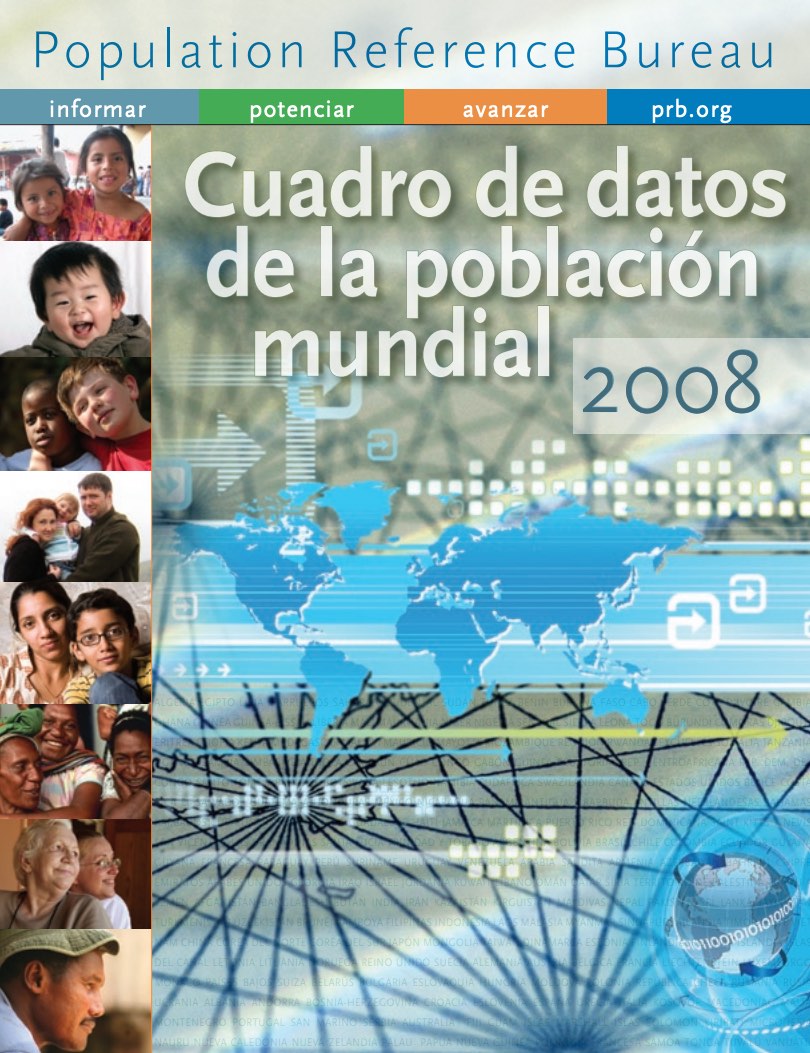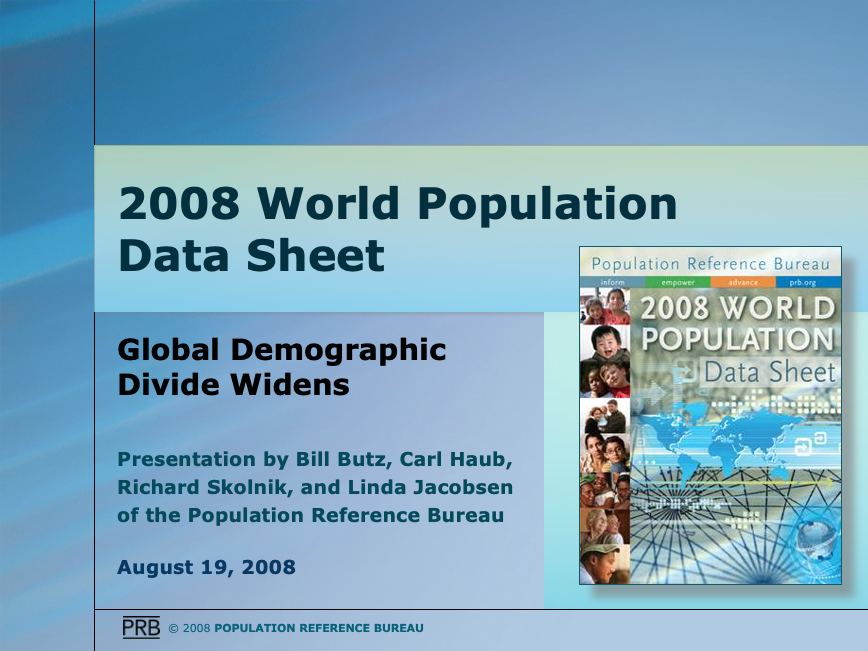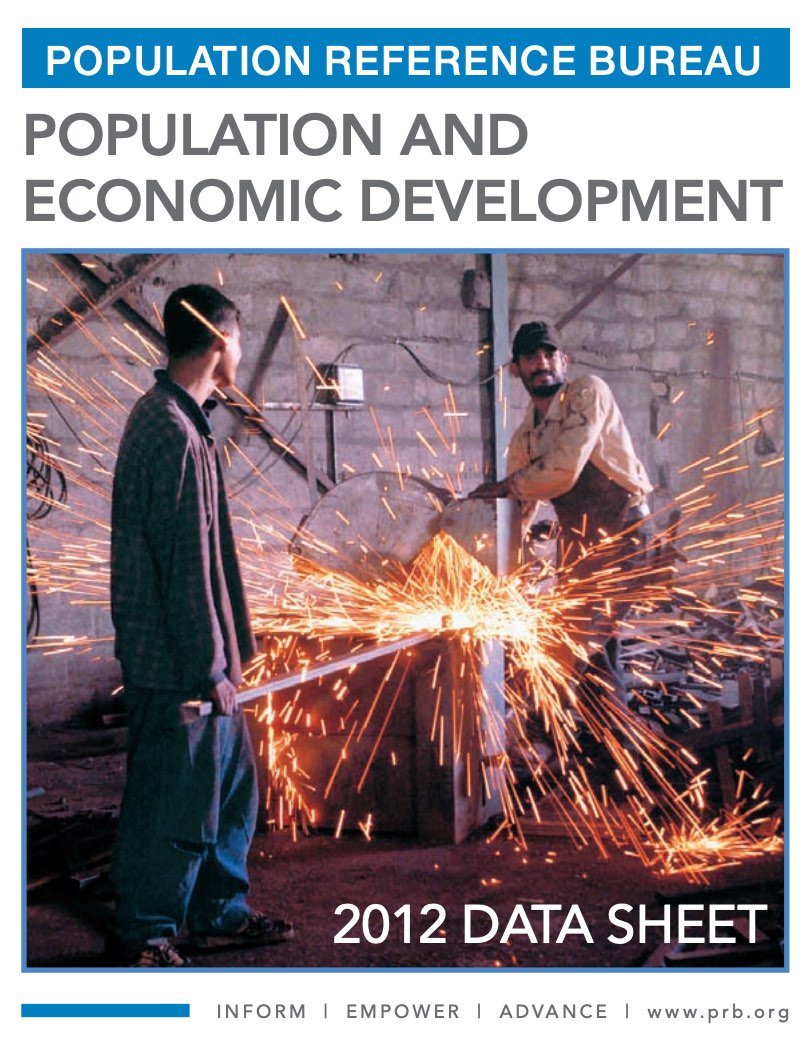Cuadro de datos de la población mundial 2008
(2008) The demographic divide—the inequality in the population and health profiles of rich and poor countries—is widening.

(2008) The demographic divide—the inequality in the population and health profiles of rich and poor countries—is widening.
(2009) Youth around the world—especially young women—experience a high risk of unplanned pregnancy and HIV because of their limited knowledge about sexual and reproductive health. Sexual behaviors among youth can include positive practices, such as abstinence and condom use, or lead to negative outcomes such as unplanned pregnancy and the spread of sexually transmitted infections (STIs).

(2008) The demographic divide—the inequality in the population and health profiles of rich and poor countries—is widening.

(2013) Muslims account for around one-fifth of the world's population—or about 1.6 billion people.
Since the early 1960s, many countries have instituted large-scale programs to provide contraceptive access and services to their populations.
Video Series: Demography can be complicated and confusing. The media can discuss population issues based on false assumptions and interpretations without realizing it.
Project: PACE: Policy, Advocacy, and Communication Enhanced for Population and Reproductive Health
This web feature expands the concept of the demographic dividend to project four potential sets of benefits—in addition to economic growth, it outlines benefits in child survival, education, and political stability.
(Video Series) The birth rate is one of the most basic and important measures in demography. But its relevance is not limited to just demographers.